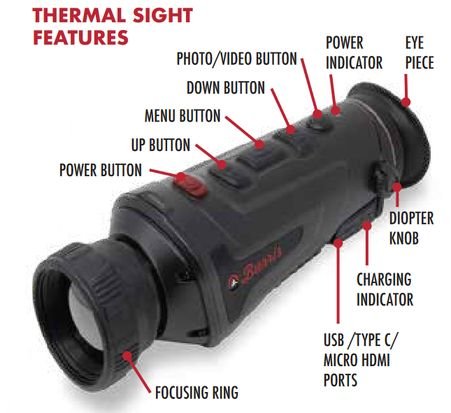In this article, I’ll show you a list of the best thermal monocular for hunting coyote, hog, coon, squirrel and more. They enable you to detect animals day and night before identifying with your shooting optics.
After 25 hours of research, I found Burris Thermal Series Handheld Thermal Vision Device for Night Hunting is a top choice. But wait, there’s more…
Best Hunting Thermal Monoculars:
Best Thermal Monocular For Hunting Reviews:
1. Burris Thermal Series Handheld Thermal Vision Device for Night Hunting:

Via Amazon.com
If you are looking for long-range scanning with many extra features and perfect image quality in total darkness, check out the Burris thermal vision device.
Specs: | |
|---|---|
Sensor resolution | 400 x 300 |
Base Magnification | 2.3x - 9.2x |
Optical Magnification | 1x - 4x |
NETD (clarity) | N/A |
Pixel Pitch | 17μm |
Objective lens | 35 mm |
Detection range | 750 yds |
Weight | 1.06 lb |
Battery Life |
5 hours |
Great Sensor
The high pixel pitch of 17μm offers a fantastic image quality. It allows you to detect animals from long distances up to 750 yards.
Pixel pitch is the distance between the centres of two pixels of a microbolometer.
Nice for low-light hunting
It is great for low-light spots with a large aperture of F1.2. It gathers more light in dim conditions.
High Power

Via Amazon.com
With a base magnification of 2.3 to 9.2x, it offers less zoom than Pulsar Helion.
It’s great if you are standing still or hunting from a blind and want to scan a large area with a long-range identification and a crisp image.
But the field of view (FOV) is tight, so it’s a bit of a trade-off.
The digital zoom is 1 to 4x, with a smooth zooming in.
High-resolution display
The LCOS screen has a 400 x 300 resolution with a fast refresh rate of 50Hz, providing real-time pictures from your truck.
5 color palettes
5 color palettes make your prey stand out from the background. It includes:
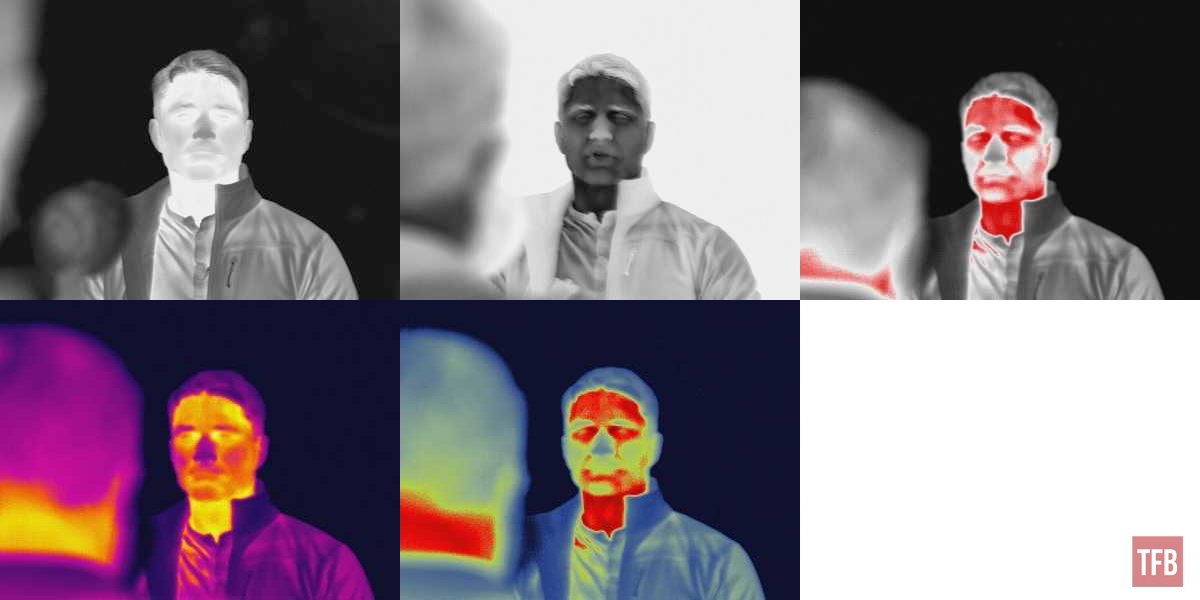
Via thefirearmblog.com
It’s extremely helpful if you need to identify the coyote or coons in the brush and cover that you can not see with your naked eyes.
Have a check how they perform:
Hot Tracking
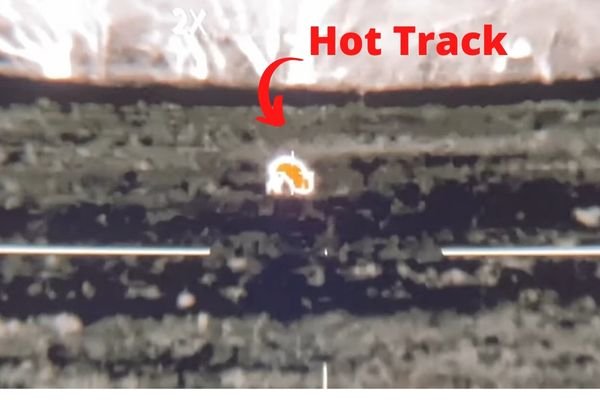
What makes this monocular stand out is the fast-tracking. It locks the heat signature even when the object is moving, so it’s a breeze to follow the targets.
Lightweight

The monocular is lightweight, as it only weighs 1.06 pounds, making it easy to carry around.
Picture-In-Picture Mode
You will have detailed viewing as a thermal scope while maintaining a wide FOV.

Great Housing
The housing makes it easy to grip your hands, even wearing gloves.
The buttons and menu are big and user-friendly, so it’s easy to use, even wet or dark.
The unit is waterproof and dust-proof according to the IP66 standard, which can withstand harsh weather.
A manual focus ring on the front gives you a sharper and more detailed image.
Internal Lithium Battery
The battery can last up to 5 hours, which can be extended with a power bank or turned to low power mode.

However, you cannot replace the battery without sending it back to the factory.
Built-in rangefinder
The rangefinder function lets you measure how far your target is out in the field.
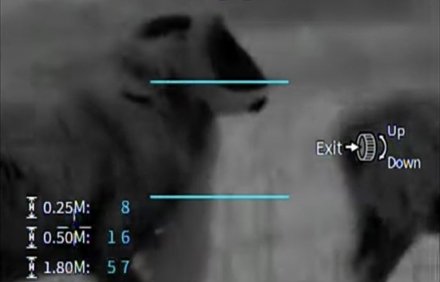
Built-in rangefinder - Via burrisoptics.com
Pairing to wifi
You can pair the monocular to your phone using Wi-Fi, allowing you to change the app's settings and remote control.
Pro tips:
I advise you to attach the thermal monocular to a tripod in a different location, allowing you to view it remotely from your stand.
Lifetime warranty

The lifetime warranty ensures the manufacturer backs you up, which is nice.
Downside
I didn’t like the bulky size. It’s 7.5 by 2.5 by 2.7 inches which are bulkier than most monoculars on this list.
The battery is not self-serviced, and the startup time is long.
Besides, you cannot adjust manual focus from the mobile app, and there is no internal memory for video recording.
Last but not least, there is no lens cover so that the lens can be scratched.
Pros:
Cons:
2. Pulsar Helion 2 Thermal Monocular - XP50 Pro:

Via Amazon.com
If you are looking for a sensitive handheld monocular that offers top clarity and detects long-range amazingly, check out the Pulsar Helion 2.
Specs: | |
|---|---|
Sensor resolution | 640 x 480 |
Base Magnification | 2.5x |
Optical Magnification | 20x |
NETD (clarity) | 25 mK |
Pixel Pitch | 17μm |
Objective lens | 50 mm |
Detection range | 1800 yds |
Weight | 3.2 lbs |
Battery Life |
8 hours |
Best Clarity
With the NETD of under 25mK, it’s certainly better than the previous generation and offers a crisp and astonishing image while observing.
You can’t beat the optical clarity.
What is NETD in a thermal camera?
The expression stands for “Noise Equivalent Temperature Difference”. It measures how well a thermal imaging detector can distinguish between very small differences in thermal radiation in the image. NETD is typically being expressed in milli-Kelvin (mK).
High Sensor Resolution
The 480 x 640 resolution and the 17µm pixel pitch sensor offer a much higher resolution than the old 320 units.
This handheld scanner also has a larger objective lens than the XP50 regular monocular, which provides superb image quality.
It also has an image boost, improving the image contrast from the background. You can see small insects within distances of 50 to 60 yards. Have a check:
Note: this feature might be turned off by default, but it’s pretty easy to turn it on.
Extremely Powerful
With the 2.5 base magnification, it’s a balance between power and long range. You have a powerful base for long-range observation and a pretty wide FOV.
The digital zoom is 20x that is easy to locate animals at a max of 1,800 yards in the wide open field.
Wide Field of View
FOV is wide thanks to the big objective lens of 50mm.
With large FOV - 218 on 1000m, you can pick out coyotes at distances of up to 2,000 yards.
The best part: you can replace the lens with a 28 or 38 mm to get even wider FOV with less range.
8 Color Palettes

You can freely switch around and pick out animals with multiple colour palettes in low or no light conditions. Nothing can hide.
Bulky size & weight

With a weight of 3 pounds, it’s somewhat heavy. The size is bulky - 13 by 5 by 5 inches, but it still feels good in your hands.
AMO LED Display

Via pulsar-nv.com
This thermal spotter provides a large screen with a high resolution of 1024 by 768. But if it were any higher, it would consume much of your battery.
The refresh rate is fast - 50Hz, so you can get an instant picture with zero issues.
Built-In Recorder

Via Amazon.com
The built-in recorder allows you to easily take videos or photos day and night for up to 8 hours.
It can work as a hunting camera with sensitive audio to record nearby sounds but does not take background sounds well.
The wifi enables you to share your hunting trips with your friends.
Built like a tank

Via Amazon.com
The housing is a tank, thanks to the magnesium alloy housing, making it more reliable and shockproof. So you never have to worry about dropping it accidentally.
It can work smoothly in harsh weather, down to -13 to 122 degrees Fahrenheit, which is much lower than other models on the market.
User friendly
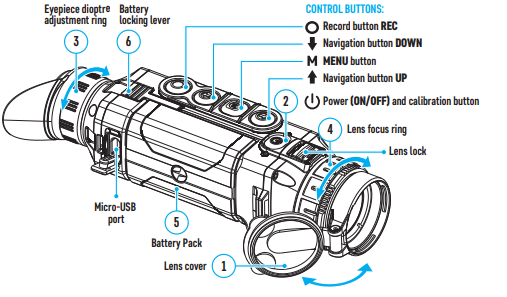
Via optics-trade.eu
The menu and the buttons are easy to use.
The eye relief of 15 mm is excellent for hunters who wear glasses.
The product is IPX7-standard waterproof so that it can work on rainy days.

Via Amazon.com
Fast startup
The startup is fast. It takes less than 3 seconds to start, and the sleep mode is there to save battery life.
Interchangeable Battery
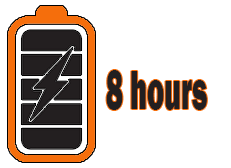
You’ll love interchangeable batteries, which is an advanced feature.
It allows you to change the battery quickly if it drains without hooking to a charger or sending it back to the factory.
The battery life is great, up to 8 hours. You can extend it with a backup battery or a power bank.
Built-In Rangefinder
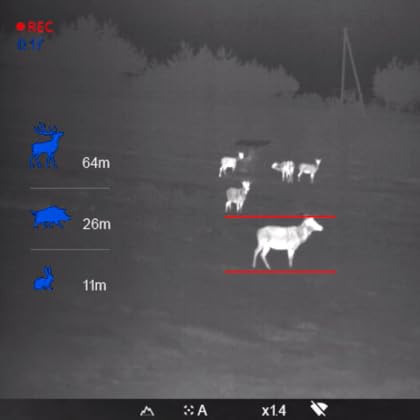
Via Amazon.com
It’s not as good as the hunting rangefinder, but it’s still functional enough to estimate deer, wild boars, and rabbits.
Warranty

The warranty is 3 years, but you can use this monocular for much longer.
Frequently update software
The software is frequently updated yearly to refresh your visual experience; not many brands do it.
Downside
This thermal imager is relatively expensive, but it’s worth every penny.
It’s also bulky and doesn’t have the option to review your recording as a video camera - you will need to do it via a computer.
The StreamVision 2 app might be difficult to connect, as well.
The unit is comfortable to use in your right hand, while you might experience problems if left-handed.
Pros:
Cons:
3. AGM Global Vision Thermal Monocular Taipan TM15-384 Thermal Imaging Monocular:

Via Amazon.com
If you are looking for a long-range, fixed focus lens with a balance of the wide FOV and medium range, the AGM Global Vision Taipan monocular is a good choice.
Specs: | |
|---|---|
Sensor resolution | 384 x 288 |
Base Magnification | 1.5x |
Optical Magnification | 2x - 8x |
NETD (clarity) | 35 mK |
Pixel Pitch | 12μm |
Objective lens | 15 mm |
Detection range | 755 yds |
Weight | 0.64 lbs |
Battery Life |
7.5 hours |
Extremely Sensitive Lens
The highly sensitive lens has a NETD of 35mK which is bigger than Pulsar. But it has less clarity than Pulsar.
The pixel pitch is 12μm, so it’s lower than the other monoculars but gives you a higher resolution, providing a smoother and crisper image. You can see landscape details very clearly, day or night.
The sensor resolution is 384 x 288 pixels, so it's not the highest, but it still provides high contrast and a clear image.

Via Amazon.com
Hot Spot Mark
The mark allows you to capture the heating source on a large field before you take a closer look at your scope.
The large screen with the 0.4” and 1280 x 960 LCOS display is decent, but it’s still easy to see. I wish it offered an AMO LED display like Pulsar.
4 Color Palettes
There are only 4 color modes, but it enables you to allocate critters in wooded areas and win any scenario at night.

Via Amazon.com
Not powerful
The product is not powerful, but the low power still has an advantage.
It enables a 1.5x base magnification with a wide FOV - 92 feet at 100 yards which is nice for scouting in wooded areas.

Via Amazon.com
Ergonomic Design
This infrared monocular is half the size of the Pulsar: 6.3 x 2.4 x 2.2”
It’s light (only 0.6 pounds), small and compact to fit in your pockets.

Via Amazon.com
Intuitive menu
The buttons and the menu are easy to use with only 4 fingers, so you can simply take pictures and videos.
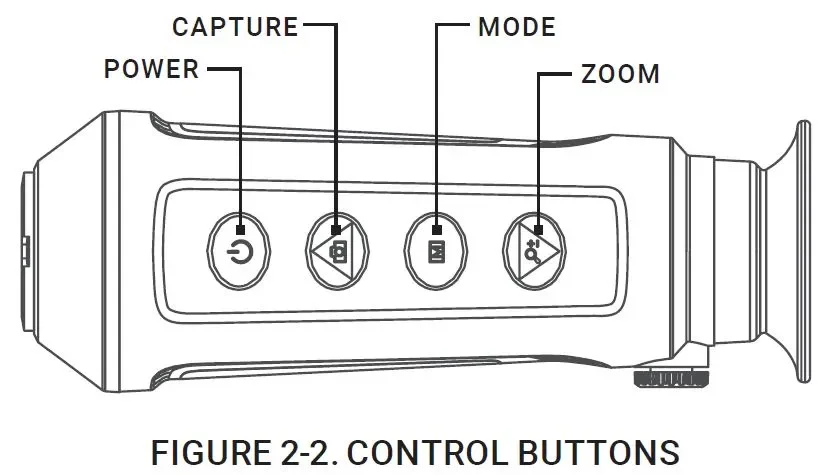
Via manuals.plus
Even more, you can attach it to a helmet with the additional dovetail mount to free your hands.
Tripod mount
The bottom mount to a tripod will stabilize your scanning process.
Durable

The monocular is IP67-waterproof, but it can restrain only light rain.
The working temperature is from -1 to 131 degrees Fahrenheit, so it works fine in poor weather, fog, cold, and rain with no issue.
Pretty Long-Range Detection
The detection range is 775 yards, so it’s shorter than Pulsar. However, you can recognize hogs at about 200 yards accurately.
Affordable price
This monocular is affordable and a lot cheaper than the Pulsar monocular. So it’s a nice entry-level gadget for night hunting.
Long battery
The battery lasts up to 7.5 hours without Wi-Fi, so that it can go through all night.
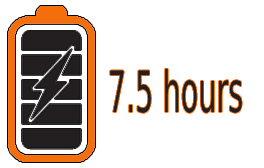
Pairing with app
You can pair it to your phone using the T-Vision app, which allows you to zoom in and out and stream.

The unit comes with a limited 3-year warranty.
Using a thermal device definitely makes it easier to see livestock and farm infrastructure in the background, which can only increase the safety aspects of hunting on private farmland – and avoid any costly mistakes that will put you at odds with the farmer.
Downside
The fixed focus on the objective lens offers no focus to adjust the ring. So it’s not good for focusing on targets long distancein your bib. You can only spot above 12 feet.
Unremovable battery
The battery is built-in and not removable, and you cannot replace it yourself when it wears out. In short, you will likely need help from manufacturers.
If you prepare for multi-day hunting, you must recharge it with a power bank.
Small memory
The internal memory is only 8GB, so you need to pair it with a laptop to edit the video. There is no external SD card supported.
Want more?
The lens is low-resolution due to the small objective lens of only 15mm, gathering less light than bigger ones.
There is no audio recording, and the startup might take over 30 seconds.
Pros:
Cons:
4. FLIR Scout III Thermal Imaging Monocular:

Via Amazon.com
If you are looking for a viewer without a recording feature with a fast refresh rate, you might want to check out FLIR Scout III.
It allows you to check what kind of animals are in the brush.
Specs: | |
|---|---|
Sensor resolution | 640 x 512 |
Base Magnification | 1x |
Optical Magnification | 4x |
NETD (clarity) | 50 mK |
Pixel Pitch | N/A |
Objective lens | 35 mm |
Detection range | 1246 yds |
Weight | 0.75 lbs |
Battery Life |
5 hours |
High resolution lens
With a resolution of 640 by 512 pixels, it’s a higher resolution than the Pulsar Helion. It picks up a detailed image from 1,000 yards away under ambient temperature.
The clarity is good - with the NETD of under 50mK, double the Pulsar Helion but with less clarity.
The objective lens is pretty big - it’s 35mm, so it sends more light to your lens, but luckily, you can be adjusted it.
Lightweight & Portable

Weighing only 0.75 pounds, it’s relatively lightweight.
It’s compact and easy to use with one hand. Thanks to the 6.7 by 2.3 by 2.4 inches size, it’s slightly bigger than the AGM TM384, but it can fit nicely in your bibs.
Big Screen
The 640 by 480 LCD screen has a fast refresh rate of 60Hz. You get light-speed thermal images on your screen; few spotters can get such a high refresh rate.
3 Color Palettes
You have a good variety with 3 color palettes:
It’s good enough for enhancing the highlighted coyote in the small field.
Wide Field of View
The base magnification is 1x, which is low, but it’s great if you move. It’s perfect for spotting in tight quarters where you can see within 100 yards only.
The 4x digital zoom offers a broader FOV observation for a longer range if needed.
Medium range
The range is medium, meaning you can easily spot a coyote from 1,200 yards away, but I think you will feel the most comfortable within 500 yards’ distance with the Scout III.

Via Amazon.com
Well-Built Housing
With the rubber coating, you will feel the monocular is steady in your hand.
It’s durable and shockproof, so you don’t have to worry about dropping it. Frankly, it's been tested from 6.6’.
It can withstand snow without damage. It works well from -4 to 122 degrees Fahrenheit.
The monocular is waterproof, so you can use it under snow or wet conditions.

Via Amazon.com
Straight to use
The menu and buttons are straightforward.
Besides that, the tripod mount at the bottom allows you to attach it to most tripod heads and stabilize your sighting.
Fast Startup
Just press the power button for 1.5 seconds, and you will always have your monocular ready to do thermal scanning if a coyote passes through.
Made in USA

The IR spotter is made in the USA, so you can feel confident about its quality.
Downside
No self-serviced battery
The battery is non-exchangeable, as the monocular has a built-in internal battery.
You will need to hook it to the outlet or a power bank to recharge it. Besides, you cannot replace it without returning it to the manufacturer.
For viewer only
There is no built-in camera to take photos and videos. If you want to, you will have to connect the video output to an external camera or phone to capture the footage.
The lack of this feature makes this overpriced monocular IMO.
Fixed focus lens
The focus is fixed with no manual focus, so that the picture might seem a bit blurry at distances further than 50 yards.
But note that this is a monocular rather than a spotting scope or binos for range-glassing.
Pros:
Cons:
5. ATN OTS-XLT Compact Lightweight Thermal Viewer:

Via Amazon.com
If you are looking to substitute your night vision scope, retaining the option to scan surroundings without pointing your rifle for extra safety, check out the ATN OTS-XLT compact thermal viewer.
It’s the ultimate option for entry-level thermal hunting.
Specs: | |
|---|---|
Sensor resolution | 160 x 120 |
Base Magnification | N/A |
Optical Magnification | 8x |
NETD (clarity) | N/A |
Pixel Pitch | 17μm |
Objective lens | 19 mm |
Detection range | 850 yds |
Weight | 0.81 lbs |
Battery Life |
10 hours |
High Resolution Display
The display of 720 x 540 pixels with 4 color palettes makes watching animals at night so much fun.
Check them out: white hot, black hot, red hot, and color.
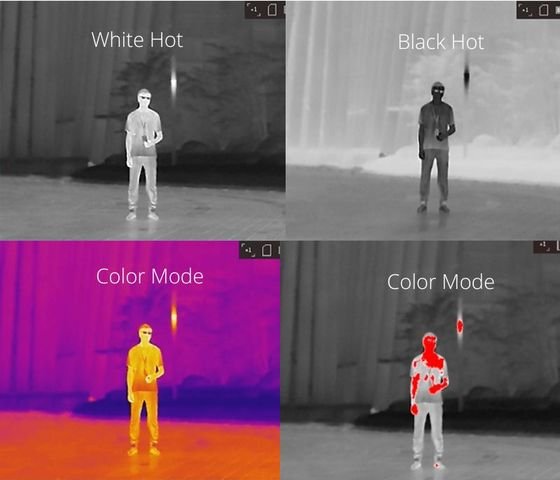
color palettes - ATN OTS-XLT
Low Resolution Sensor
The sensor has 160 x 120 pixels, which is functional for scanning hogs in thick brush.
However, it will be blurry from 20 yards and more. The small sensor of 17μm provides a high-density image in a short range.
Heat Signature
The heat signature marks the hottest source clearly with no effort. It can be helpful in the field where you need to track deer and identify moving animals.

Via atncorp.com
Lightweight

Weighing only 0.81 pounds, this unit is lightweight and can easily fit in your pocket.
Good Magnification
With the 1x base magnification, this monocular offers a wide FOV due to low power. It’s ideal for scanning and recovering wounded games on a large open field.
The digital zoom offers magnification from 2x to 8x. Although the image quality is not excellent but relatively good.
Built-In Rangefinder

Via Amazon.com
The rangefinder can detect up to 263 yards and save you some bucks on getting an additional rangefinder.
Far Detection Range
The detection range goes up to 670 yards - but in my experience, the actual yardage is about half, so that you will get about 300 to 400 yards in the open field.
You can identify animals up to 170 yards away during the day or night.
The video recording ability with the integrated camera can make your hunting trips fun.
Long Battery Life
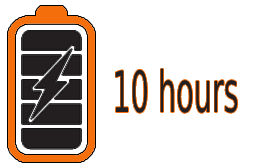
The battery life is up to 10 hours, so it can last you all night with no issues.
However, the battery is internal, so you cannot self-service if it drains.
Well-Made & Ergonomic Viewer
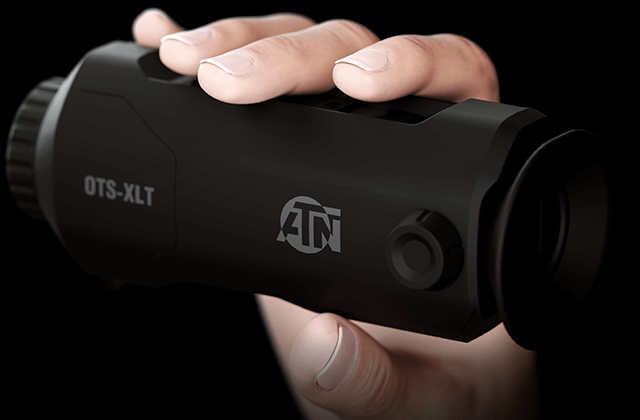
Via atncorp.com
The rubberized coating secures your investment from accidental drops.
The ¼” tripod screw at the bottom allows you to attach the monocular to your helmet and free your hands.
The buttons and menu are intuitive and easy to use even without the manual.
Budget-friendly
The price is budget-friendly, making it an excellent pick for an entry-level hunter who is getting into night hunting.
The 2-year warranty can leave you without worries as the manufacturer will stand behind the product.

Downside
Bulky
I didn’t like how bulky this monocular is - it’s bulkier than the AGM and the Scout III, with dimensions of 6.85 by 2.63 by 2.08 inches.
However, it’s still comfortable to handle with big hands.
Difficult to use rangefinder function
Using the rangefinder function is difficult, so you will need to pass many steps to identify the target, which might take too much time on the field.
Low resolution
The low-resolution sensor is expected - you can’t get too much from an affordable unit.
Others:
- There is no manual focus with the less detailed images when zooming.
- The startup time is long - it can take between 6 and 8 seconds.
- No lanyard cord is included, but you should get it to make it handier while hunting.
Pros:
Cons:
How to Choose the Best Handheld Thermal Imager for Hunting:
Besides the great products I have researched, I have compiled a buying guide to help you pick the best features for your new thermal monocular. So keep reading:
Sensor Resolution
Thermal monoculars detect heat signatures which makes them different from regular monoculars (thanks to their sensor).
Most products you will find online with a high-resolution pitch have a detector of 480 by 640 pixels.
At the very least, you will need to find a scope with that resolution, but I advise you to look for products that offer a higher resolution if you want great pictures.
Noise Equivalent Temperature Difference (NETD)
What is NETD?
NETD is the thermal sensitivity level, indicating the minimum temperature difference that the camera can detect. The NETD values are measured in mK, and they are essentially a result of the noise made by the infrared detector.
If the noise is lower, the smaller the temperature differences are, and the camera can detect even the smallest changes. So, most products offer a resolution of 100 mK, which is what you should look for.
For instance, the Pulsar Helion has the lowest NETD (under 25 mK) and has the best clarity.
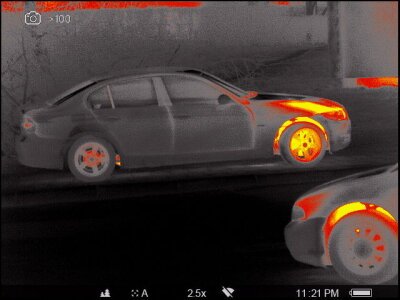
40mK (clearer) - Via pulsar-nv.com
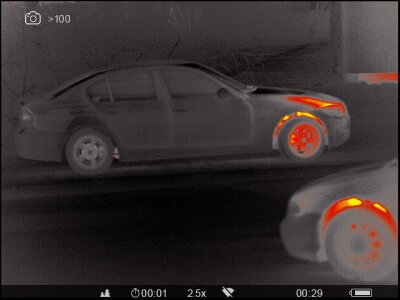
50mK - Via pulsar-nv.com
On the other hand
If your thermal monocular can detect even the smallest changes in the temperature, you can spot your prey wherever it is. Even if your game is hidden well, nothing will stop you with a good sensor resolution.
That is why you will need to pay special attention to the sensor resolution, as that’s the feature that makes a good thermal monocular. Without an exceptional sensor, the thermal monocular is pretty much useless.
Magnification
What is the magnification and base magnification?
Magnification is, essentially, the ability of the scope to enlarge objects by zooming. Most scopes and monoculars have specifications that allow them to enlarge objects up to a certain distance optimally.
On the other hand, base magnification is the optimum distance you can see without blurring, no matter how much you zoom it.
Do you need a high-power monocular?
The critical point to remember about monoculars is that with a higher power comes a longer distance and low FOV. Higher powers will help you identify objects at a longer distance, but the issue with high base magnification is that you lose the field of view.
My recommendation:
I would rather be unable to identify a coyote at the maximum shooting distance than miss one slipping right past me at 100 yards.
So, I recommend you look for a thermal monocular with a base magnification between 1.5 and 2x.
Moving
If you plan to use it while moving, I would stay around 2x or less base magnification-wise.
This allows for the widest field of view, and it’s ideal if you are in a tighter quarter, seeing less than 100 yards.
It’s also great for finding dead deer. On top of that, it’s faster to scan than optical zoom.
Standing still
If you wish to hunt while standing still, you can go for a base magnification of over 2x.
Pro tips:
I found it’s much easier to turn my head and scan a wider area than to use a low-power thermal and lift up my rifle whenever I wanted to identify something before starting a long stalk.
Detection Range

The detection range is very effective for all hunters looking for a long-distance hunt. You should focus on the detection range to hunt from a good distance.
For example, you can see an object with a heat signature at the maximum detection range, but you cannot tell what it is - just that it exists.
The identification range is smaller than the detection range, and the maximum identification range is where you can get a good guess at what the object is.
The recognition range is even smaller, and on the maximum recognition distance, you can confidently say that the object you’re seeing is on the maximum recognition distance.
If your monocular has an identification range of over 200 yards and can detect targets - allowing you to get a good look at the target, it will improve your success at all times.
It won't affect how you usually hunt if it doesn’t offer a decent detection range. The point is to make it easier, so make sure you look for a 200+ yards detection range.
Display Resolution
Display resolution will show everything the heat signature picked up - visualised for humans. Your monoculars must also have a great display resolution to present everything the sensor found.
At the very least, your display should have a least resolution of 480 by 640 pixels. With this resolution, you can see everything enough to shoot.
Color Palettes
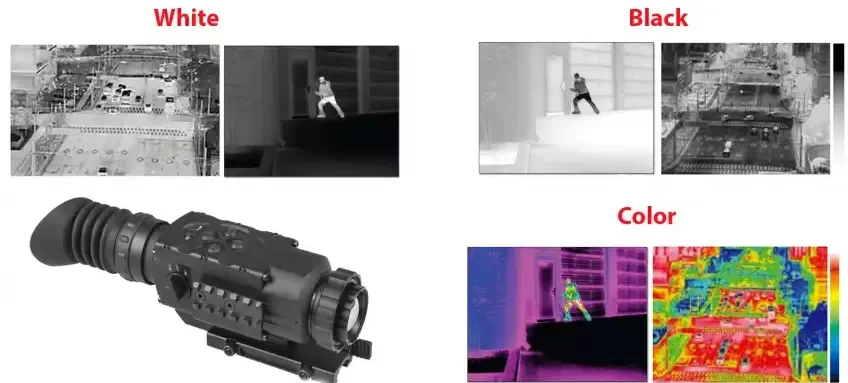
Via agmglobalvision.com
Thermal monoculars come with various color palettes, and you should pick a palette that works best according to your needs.
There are different palettes for various styles, and most hunters have a preference for the color mode.
- Darker shades usually depict objects with a lower temperature,
- Bright colors depict something with a higher temperature.
- Some people cannot detect certain colors, so they pick a palette that works best for them.
Now, there is one more point I need to make:
The more color palettes, the more choice. It will ensure you see all the objects clearly without missing a good shot.
With plenty of color modes, you can try them all to see what doesn’t tire out your eyes, even when you spend a lot of time looking through the monoculars.
If your eyes are sensitive to light, there are great options to choose red palettes so you don’t get a headache.
Refresh Rate (Hz)

As for the refresh rate - the general rule of thumb is that the higher, the better. For instance: the Flir Scout III (60Hz) has a higher refresh rate and is better than Burris Handheld Thermal.
Why is it so important?
Higher refresh rates ensure that the image is refreshed quickly so you can see more details and the object status in a matter of seconds if you are looking at it.
A higher refresh rate ensures you don't miss out on your target's movement and gives you a better chance at success.
If you aren’t too sure what a high refresh rate is for a thermal monocular, look for thermal monoculars with a refresh rate of 30 Hz or higher.
Choosing a 30+ Hz monocular will give you a perfect picture and a better chance of catching your prey.
Battery Life

As for the battery life, you will need to check for a monocular that will last you, at the very least, till the end of the day with constant use.
If you usually go camping and spend the entire weekend hunting, you will need to find a monocular that has a solid, strong battery.
Many thermal monoculars have specific helpful features that can quickly drain the battery. Wi-Fi and Bluetooth can shorten the battery life. These features are usually something you will need for an all-day hunt.
Our Recommendation:
You will need to look for a thermal monocular with a 10+ hour battery life. Ideally, it should be interchangeable, which you can replace without sending it back to the manufacturers.
Otherwise, you will have to carry an extra charger or battery, which can add more weight load and less convenience.
Durability
With bigger optics comes more vulnerability to external factors such as snow and rain.
Waterproof

If you are looking for powerful optics, you must ensure you are buying a weatherproof unit - you don’t want to buy a monocular that will get wet from a little rain.
Shockproof

Another note to remember is if you plan to move around a lot in the woods.
If you do, you should find a portable and shockproof monocular that can withstand bumps, mud and snow, or it won’t last nearly as much as you want it to.
Size and Weight
Size
Size is something you will need to consider depending on your hunting style.
If you like to station yourself in a ground blind or a tree stand, you can get away with most thermal monoculars available on the market.
However, bulky monoculars will be annoying to carry around if you like to be on the move, and they can take up a lot of precious space.
If you like to move around, stick to more compact monoculars, so they don’t use up space for other accessories you want to take with you.
Weight
As for the weight - every ounce matters. If your hunting spots are far away from your truck, you certainly don’t want to haul too many pounds on your back as you will get tired quickly.
So, you will need to spare every ounce you can - including your monoculars.
Warranty

A solid warranty keeps you safe in case something happens to your monocular.
So, at the very least, you should look for a monocular with a 1-year warranty.
Preferably, you should find a monocular with a lifetime warranty, as it’s a sure sign that the manufacturer feels confident in the quality of the product.
Another thing you need to check is whether the warranty only applies to the original buyer.
If that is the case, you will not get a free warranty from manufacturers.
FAQs:

Can Thermal Monocular Be Used in Daylight?
Yes, thermal monoculars can be used during the day and night. Unlike night vision gadgets, it will work equally well during the day because animals emit body temperature.
So, no worry if you want to use your monoculars in the morning - you will still see everything you need.
Can You Use a Thermal Monocular With a Scope?
Yes, thermal monoculars can be used with a rifle or crossbow scope. There are two options for mounting the monocular:
I advise you to try both options before you settle for one of them to see what works best for you.
Is thermal imaging legal for hunting?
No, although most states allow hunting with thermal and night vision devices, such as North Dakota, it’s still illegal in some county as Utah and Missouri.
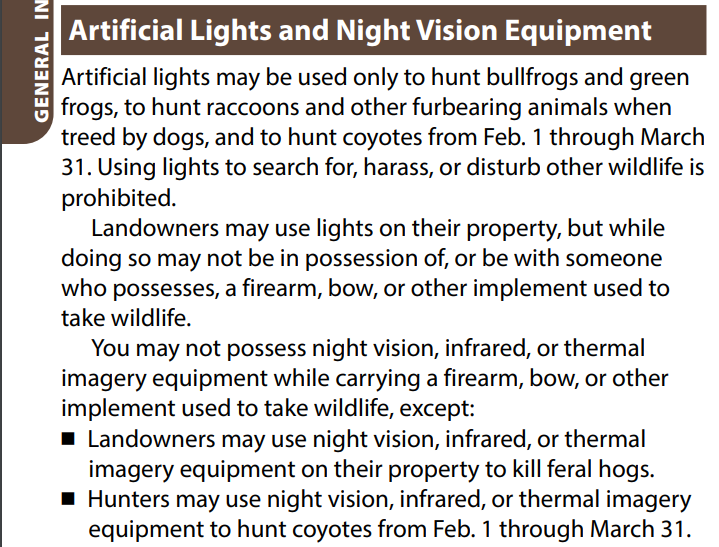
Thermal hunting in Missouri, 2021

Thermal hunting in Utah, 2021
Bottom Line:
There are so many amazing thermal monoculars on the market today. I had a lot of fun researching thermal monoculars and trying out the best ones I could find.
However, despite finding solid choices - Burris Thermal Series Handheld Thermal Vision Device for Night Hunting is our best thermal monocular for hunting.

Via Amazon.com
- Clear image
- Powerful
- Wide FOV
- Lightweight
- High resolution sensor and display
- Long range detection
- Nice color palettes
- Lifetime warranty
Make sure to check it out.

